
Overview
The Mining, Quarrying, and Oil and Gas Extraction Industry involves the extraction of valuable resources from the Earth. It includes mining for minerals and metals, quarrying for construction materials, and extracting oil and natural gas. This industry is critical for supplying materials for construction, energy production, and manufacturing. It varies in scale from small local operations to large multinational endeavors and requires responsible resource management due to environmental considerations.
Depending on specific features and functions, GAO Tek’s formaldehyde are sometimes referred to as
Methanal, Formalin, Methyl aldehyde, Formic aldehyde, Formaldehyde gas, Aqueous formaldehyde, Methylene oxide, Morbicid, Oxomethane, Paraformaldehyde (a solid form), Formol, Formolene, Formalith, Formalith 40, Fannoform.
GAO Tek’s formaldehyde have the following applications in mining, quarrying, and oil and gas extraction industry:
- Chemical Processing: GAO’s formaldehyde can be used as a feedstock or intermediate chemical in various processes within the chemical industry, which may indirectly support mining and oil and gas operations through the production of chemicals used in extraction, refining, and processing.
- Water Treatment: GAO’s formaldehyde-based water treatment chemicals can be used to control bacterial growth and reduce corrosion in water systems associated with mining and oil extraction operations, particularly in cooling water systems.
- Drilling Fluids: Some drilling mud additives contain formaldehyde-based resins that help stabilize wellbores during drilling operations in the oil and gas industry.
- Polymer Production: GAO’s formaldehyde-based resins, such as phenol-formaldehyde and urea-formaldehyde resins, are used in the manufacture of composite materials, including drilling fluids, polymer drilling fluids, and resin-coated proppants used in hydraulic fracturing (fracking).
- Laboratory and Analytical Processes: GAO’s formaldehyde may be used in laboratories associated with these industries for various chemical analyses, calibration of equipment, and as a reagent for specific tests and measurements.
- Proppant Coatings: In hydraulic fracturing (fracking) operations, proppants (usually sand or ceramics) can be coated with resin systems that may contain formaldehyde-derived compounds. These coated proppants help improve their strength and conductivity when used in well stimulation.
- Corrosion Inhibitors: Some corrosion inhibitors used in the oil and gas industry may contain formaldehyde-based compounds. These inhibitors help protect equipment and pipelines from corrosion caused by the presence of corrosive substances in oil and gas production.
- Gas Detection and Monitoring: GAO’s formaldehyde can be used indirectly in the design and calibration of gas detection systems that are essential for monitoring potentially hazardous gases in mining and oil and gas operations.
More information on formaldehyde and their applications in other industries can be found on this page.
Commercial Formaldehyde Gas Detectors
This category page lists related products.
GAO Tek’s targeted markets are North America, particularly the U.S., Canada, Mexico, and Europe. Hence, in addition to English, this website gaotek.com is offered in other major languages of North America and Europe such as Spanish, French, German, Italian, Polish, Ukrainian, Romanian, Russian, Dutch, Turkish, Greek, Hungarian, Swedish, Czech, Portuguese, Serbian, Bulgarian, Croatian, Danish, Finnish, Norwegian, Slovak, Catalan, Lithuanian, Bosnian, Galician, Slovene, Latvian, Estonian, Welsh, Icelandic, and Irish.
Complying With Mining, Quarrying, And Oil And Gas Extraction Industry Standards
GAO Tek’s formaldehyde comply or help our customers comply with the mining, quarrying, and oil and gas extraction industry standards such as
- OSHA 1910.1048
- NIOSH 3500
- NIOSH 3502
- ASTM D5197
- ASTM D5582
Complying With Government Regulations
GAO Tek’s formaldehyde comply or help our customers comply with the U.S. government regulations such as
- OSHA 29 CFR 1910.1048 – Formaldehyde
- EPA 40 CFR Part 60, Subpart VV – Standards of Performance for Equipment Leaks of VOC in the Synthetic Organic Chemicals Manufacturing Industry for Which Construction, Reconstruction, or Modification Commenced After January 5, 1981
- EPA 40 CFR Part 61, Subpart M – National Emission Standard for Hazardous Air Pollutants (NESHAP) for Asbestos
- EPA 40 CFR Part 61, Subpart FF – National Emission Standards for Hazardous Air Pollutants (NESHAP) for Benzene Waste Operations
- EPA 40 CFR Part 63, Subpart UUUUU – National Emission Standards for Hazardous Air Pollutants (NESHAP) for Oil and Natural Gas Production Facilities
GAO Tek’s formaldehyde comply or help our clients comply with the Canadian regulations such as
- Canadian Environmental Protection Act, 1999 (CEPA)
- Workplace Hazardous Materials Information System (WHMIS) Regulations
- Canada Occupational Health and Safety Regulations (COHSR)
- Alberta Occupational Health and Safety (OHS) Code
- British Columbia Occupational Health and Safety Regulation
GAO Tek’s formaldehyde comply or help our clients comply with the Mexican regulations such as
- NOM-021-STPS-1993 – Safety and Health Color Codes and Signals.
- NOM-013-STPS-1993 – Safety and Health Training and Certification of Personnel.
- NOM-030-STPS-2009 – Work in Confined Spaces – Conditions for Health and Safety.
- NOM-025-STPS-2008 – Explosive Atmospheres – Safety Conditions.
- NOM-027-STPS-2008 – Welding and Cutting – Safety Conditions.
GAO Tek’s formaldehyde comply or help our clients comply with the European regulations such as
- European Union REACH Regulation (EC) No. 1907/2006
- European Union Classification, Labeling, and Packaging (CLP) Regulation (EC) No. 1272/2008
- European Union Seveso III Directive (2012/18/EU)
- European Union Directive 98/24/EC on Chemical Agents at Work
- European Union Directive 2017/164/EU on Reducing National Emissions of Certain Atmospheric Pollutants
Case Studies of Formaldehyde in Mining, Quarrying, And Oil And Gas Extraction Industry
Formaldehyde are sometimes called as
Methanal, Formalin, Methyl aldehyde, Formic aldehyde, Formaldehyde gas, Aqueous formaldehyde, Methylene oxide, Morbicid, Oxomethane, Paraformaldehyde (a solid form), Formol, Formolene, Formalith, Formalith 40, Fannoform.
Here are some practical examples of using formaldehyde in mining, quarrying, and oil and gas extraction:
In hydraulic fracturing (fracking), some fracking fluids may contain formaldehyde-releasing agents as biocides or stabilizers. Researchers would investigate the composition of these fluids, the levels of formaldehyde emissions, and potential health risks to workers exposed to these emissions during fracking operations. Mitigation strategies could include the use of alternative chemicals or improved ventilation systems.
Diesel engines are widely used in heavy machinery for mining and extraction. A study would quantify formaldehyde emissions from these engines, explore factors influencing emission levels (e.g., fuel quality), and assess the health effects on workers exposed to formaldehyde. Potential mitigation measures might include emission control technologies or alternative fuels.
Quarrying equipment often contains adhesives and sealants that may release formaldehyde over time. Researchers would investigate the types and quantities of formaldehyde-containing adhesives used, worker exposure levels, and potential health consequences. Safety measures might involve substituting adhesives with lower formaldehyde content or enhancing ventilation.
Some PPE items like gloves or respirators may contain formaldehyde-releasing materials. A study would assess the risk of skin contact or inhalation exposure for workers wearing such PPE. Recommendations might include using formaldehyde-free alternatives or providing guidelines for safe usage.
Investigate the use of formaldehyde as a preservative in chemical storage tanks within these industries. The study would focus on safety measures for handling formaldehyde-containing chemicals, including storage protocols, leak detection, and emergency response plans.
Drilling mud additives can contain formaldehyde-based chemicals. Researchers would assess the prevalence of these additives, potential exposure pathways, and health risks for workers involved in drilling operations. Mitigation could involve substituting additives with less hazardous alternatives.
Investigate the use of water treatment chemicals containing formaldehyde. The study would analyze the effectiveness of treatment processes in removing formaldehyde and assess worker exposure. Recommendations might include optimizing treatment methods or introducing protective measures for workers.
Construction materials used in mining facilities may emit formaldehyde. Researchers would evaluate the sources of formaldehyde, worker exposure levels, and potential health effects during facility construction. Safety measures could include using low-emission materials or improved ventilation during construction.
Explore potential formaldehyde exposure risks for underground miners, focusing on ventilation systems, chemical use, and confined spaces. Researchers would assess worker exposure levels and recommend safety measures, such as enhanced ventilation and protective gear.
Oil refineries may use insulation materials containing formaldehyde. A study would investigate worker exposure, assess formaldehyde levels, and recommend strategies for minimizing exposure, such as using alternative insulation materials.
Investigate the presence of formaldehyde emissions during solvent extraction processes in oil and gas production. Researchers would quantify emissions, assess their environmental impact, and suggest mitigation measures, such as improved containment and recycling of solvents.
Materials used in offshore platform construction and maintenance might contain formaldehyde. A study would assess worker exposure, recommend protective measures, and explore alternative materials with lower formaldehyde emissions.
Laboratories involved in oil and gas testing may use reagents containing formaldehyde. Researchers would evaluate the safety protocols in place, measure exposure levels for laboratory personnel, and provide recommendations for safer handling and disposal of formaldehyde-containing reagents.
Investigate formaldehyde emissions during equipment maintenance procedures in these industries. Researchers would assess exposure risks for maintenance workers, recommend protective measures like personal protective equipment and improved ventilation systems, and emphasize proper training.
Use of Formaldehyde With Leading Software And Cloud Services in Mining, Quarrying, And Oil And Gas Extraction Industry
GAO Tek has used or has facilitated its customers to use GAO’s formaldehyde with some of the leading software and cloud services in their applications. Examples of such leading software and cloud services include:
- Mine Planning and Design Software
- Quarry Management Software
- Geological Modeling Software
- Drill and Blast Software
- Formaldehyde Emission Monitoring Software
- Formaldehyde Concentration Analysis Software
- Chemical Analysis and Modeling Software
- Gas Chromatography Data Analysis Software
- Amazon Web Services (AWS)
- Microsoft Azure
- Google Cloud Platform (GCP)
- IBM Cloud
- Amazon SageMaker
- Google Cloud AI Platform
- Microsoft Azure Machine Learning
- IBM Watson Studio
GAO Tek’s formaldehyde and their applications in other industries are listed on this page.
Commercial Formaldehyde Gas Detectors
Other related products can be found at this category page
Meeting Customers’ Demands
Large Choice of Products
In order to satisfy the diversified needs of their corporate customers, GAO Tek Inc. and its sister company GAO RFID Inc. together offer a wide choice of testing and measurement devices, network products, RFID, BLE, IoT, and drones.
Fast Delivery
To shorten the delivery to our customers, GAO has maintained a large stock of its products and is able to ship overnight within the continental U.S. and Canada, and fast delivery to Mexico and Europe from the nearest warehouse.
Local to Our Customers
We are located in both the U.S. and Canada. We travel to customers’ premises if necessary. Hence, we provide a very strong local support to our customers in North America, particularly the U.S., Canada and Mexico and Europe. Furthermore, we have built partnerships with some integrators, consulting firms and other service providers in different cities to further strengthen our services. Here are some of the service providers in mining, quarrying, and oil and gas extraction industry we have worked with to serve our joint customers:
- Accenture
- CGI Group
- Cognizant
- Deloitte
- PwC (PricewaterhouseCoopers)
- KPMG
- WSP Global Inc.
- PwC Canada (PricewaterhouseCoopers)
- IBM Mexico
- Accenture Mexico
- Deloitte Mexico
- PwC Mexico (PricewaterhouseCoopers)
- DXC Technology
- TATA Consultancy Services (TCS)
- Tech Mahindra
- HCL Technologies
GAO Has Many Customers in Mining, Quarrying, And Oil And Gas Extraction Industry
The formaldehyde from both GAO Tek Inc. and GAO RFID Inc. have been widely used in mining, quarrying, and oil and gas extraction by many customers, including some leading companies. Here is more information on applications of GAO RFID Inc.’s formaldehyde in mining, quarrying, and oil and gas extraction.
Mining, Oil Production & Gas Extraction RFID Solutions
Here are some of GAO’s customers in mining, quarrying, and oil and gas extraction:
- Exxon Mobil Corporation
- Chevron Corporation
- ConocoPhillips
- Occidental Petroleum Corporation
- EOG Resources, Inc.
- Suncor Energy Inc.
- Nutrien Ltd.
- Imperial Oil Limited
- Husky Energy Inc.
- Cenovus Energy Inc.
- Petróleos Mexicanos (Pemex)
- Grupo México
- Industrias Peñoles
- Grupo BA
- Royal Dutch Shell plc
- BP plc
- TotalEnergies SE
- Eni S.p.A.
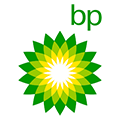

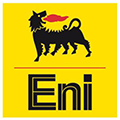
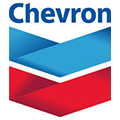
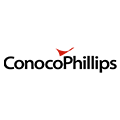
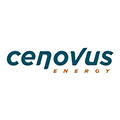

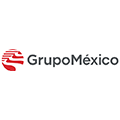


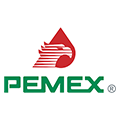
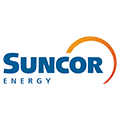

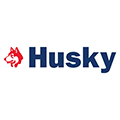

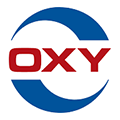
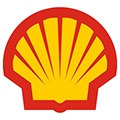
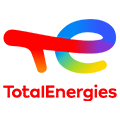
Contact Us
If you are interested in our products, services or partnering with us, please feel free to contact us by filling out this form:
or email us at
